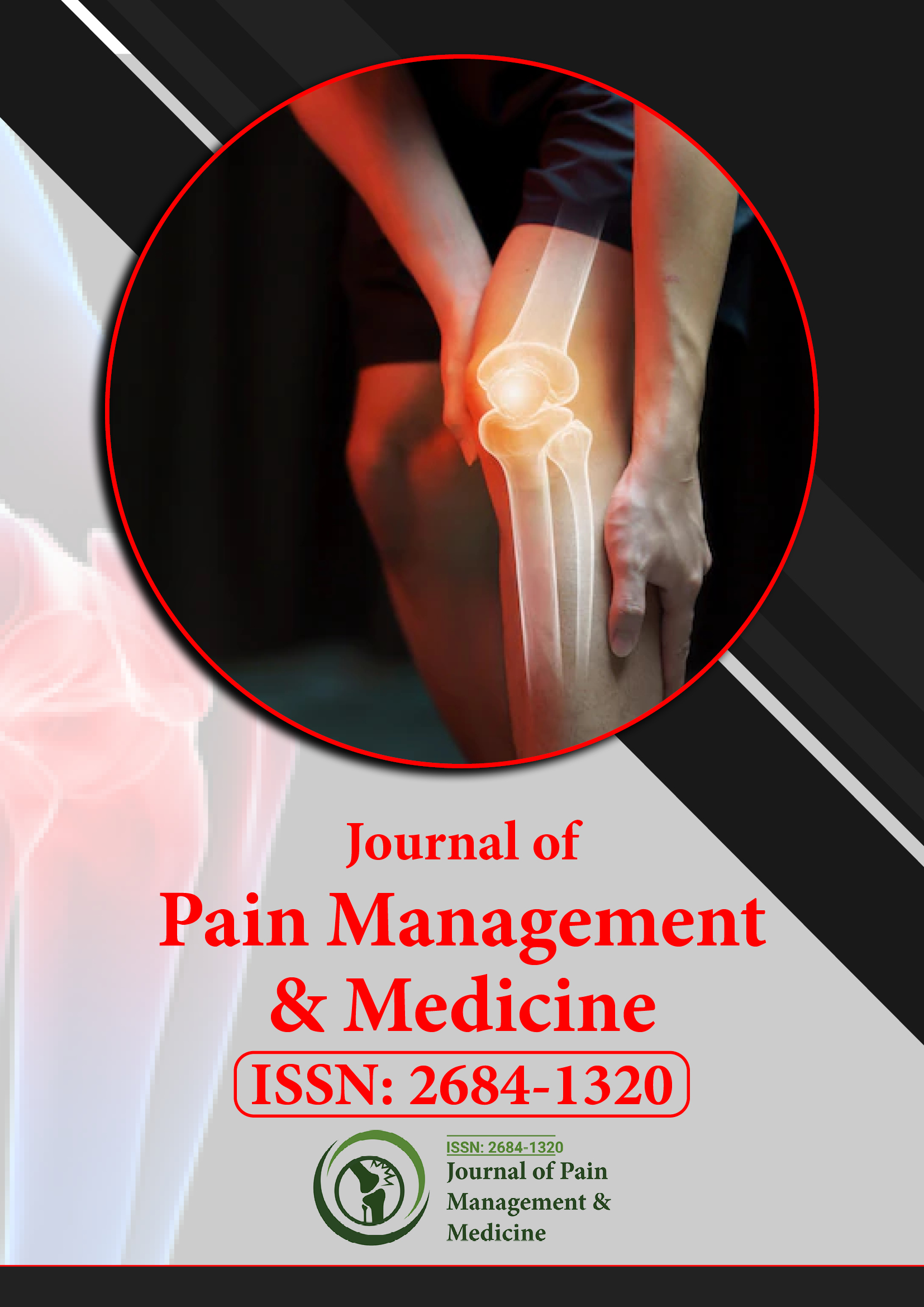Indexed In
- RefSeek
- Hamdard University
- EBSCO A-Z
- Publons
- Euro Pub
- Google Scholar
- Quality Open Access Market
Useful Links
Share This Page
Journal Flyer

Open Access Journals
- Agri and Aquaculture
- Biochemistry
- Bioinformatics & Systems Biology
- Business & Management
- Chemistry
- Clinical Sciences
- Engineering
- Food & Nutrition
- General Science
- Genetics & Molecular Biology
- Immunology & Microbiology
- Medical Sciences
- Neuroscience & Psychology
- Nursing & Health Care
- Pharmaceutical Sciences
Opinion Article - (2025) Volume 11, Issue 2
Beyond the Subjective Score: The Quest for Objective Biomarkers in Pain Assessment and Treatment Response
Isabella C. Torres*Received: 01-Jan-2025, Manuscript No. JPMME-25-28852; Editor assigned: 03-Jan-2025, Pre QC No. JPMME-25-28852 (PQ); Reviewed: 17-Jan-2025, QC No. JPMME-25-28852; Revised: 24-Jan-2025, Manuscript No. JPMME-25-28852 (R); Published: 31-Jan-2025, DOI: 10.35248/2684-1320.25.11.314
Description
Pain, a fundamental human experience, has long been assessed through subjective self-reports. While crucial for understanding the individual's perception, these measures are inherently limited by recall bias, emotional state, and the inherent subjectivity of language. The quest for objective biomarkers – measurable biological indicators – to quantify pain intensity and predict treatment response has gained significant momentum, promising to revolutionize pain research and clinical practice. Unlocking these biological signatures of pain holds the potential to move beyond the subjective score, leading to more precise diagnoses, personalized treatments, and ultimately, more effective pain management.
The allure of objective pain biomarkers is undeniable. Imagine a future where a simple blood test, a sophisticated neuroimaging scan, or the analysis of physiological signals could provide an unbiased and quantifiable measure of a patient's pain intensity, mirroring their subjective experience with greater accuracy. This would be particularly invaluable in situations where self-reporting is challenging, such as in non-verbal patients, individuals with cognitive impairment, or those with a tendency to under- or over-report their pain.
Furthermore, the ability to objectively predict treatment response would be a game-changer in pain management. Currently, clinicians often rely on a trial-and-error approach, cycling through various medications and therapies until a suitable regimen is found. This process can be lengthy, costly, and frustrating for patients. Identifying biomarkers that can predict which individuals are most likely to respond to a specific treatment – be it a particular analgesic, a nerve block, or even a psychological intervention – would allow for a more targeted and efficient approach, minimizing delays in effective pain relief and reducing exposure to ineffective or harmful treatments.
The search for these elusive biomarkers spans a diverse range of biological domains. Neuroimaging techniques, such as Functional Magnetic Resonance Imaging (fMRI) and Electroencephalography (EEG), offer insights into brain activity patterns associated with pain processing. Identifying specific neural signatures that correlate with pain intensity or predict response to neuromodulation therapies holds significant promise. Peripheral biomarkers, including inflammatory cytokines, neuropeptides, and genetic markers in blood, saliva, or cerebrospinal fluid, are also being investigated for their potential to reflect the underlying biological mechanisms of pain and predict drug efficacy. Physiological measures, such as heart rate variability, skin conductance, and pupillometry, offer non-invasive ways to assess autonomic nervous system responses associated with pain and treatment.
However, the path to identifying and validating reliable pain biomarkers is fraught with challenges. Pain is a complex and multidimensional experience, influenced by a multitude of biological, psychological, and social factors. A single "pain biomarker" is unlikely to capture this complexity fully. Instead, a panel of biomarkers, integrating information from different biological systems, may be necessary to provide a comprehensive and accurate assessment.
Furthermore, the specificity and sensitivity of potential biomarkers are critical. A reliable biomarker should ideally be specific to pain and its intensity, rather than being influenced by other physiological or psychological states. It should also be sensitive enough to detect clinically meaningful changes in pain levels and treatment response. The validation of these biomarkers requires rigorous testing in large and diverse patient cohorts, across different pain conditions, and in response to various treatments.
The translational potential of these biomarkers into routine clinical practice is another important consideration. The techniques used for biomarker measurement should be feasible, cost-effective, and readily accessible in clinical settings. Developing point-of-care testing or integrating biomarker assessment into existing clinical workflows will be crucial for their widespread adoption.
Finally, ethical considerations surrounding the collection, storage, and use of biological samples and the interpretation of biomarker data must be carefully addressed. Ensuring patient privacy, obtaining informed consent, and avoiding deterministic interpretations of biomarker results are essential for the responsible development and implementation of this technology.
In conclusion, the exploration of novel biomarkers for the objective assessment of pain intensity and treatment response represents a transformative frontier in pain research and clinical care. While significant challenges remain, the potential to move beyond subjective self-reports and develop more precise, personalized, and effective pain management strategies is immense. Continued interdisciplinary collaboration, rigorous validation studies, and careful consideration of ethical implications will be crucial in unlocking the biological signatures of pain and ushering in a new era of objective pain assessment and treatment.
Citation: Torres IC (2025) Exploring the Utility of Virtual Reality Distraction Therapy for Pain Relief during Burn Wound Care. J Pain Manage Med. 11.314.
Copyright: © 2025 Torres IC. This is an open access article distributed under the terms of the Creative Commons Attribution License, which permits unrestricted use, distribution, and reproduction in any medium, provided the original author and source are credited.

